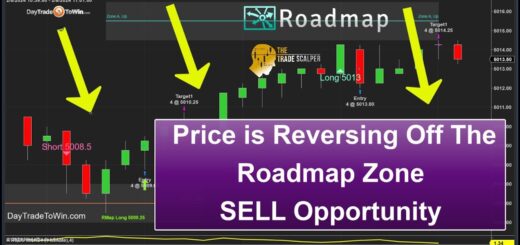Fast Profits: The Ultimate Quick $500 Trade Setup Strategy
Tuesday morning kicked off with a bang as I executed two trades back-to-back. Today, I’ll walk you through the highs, lows, and key insights from these trades. We’ll explore what worked, what didn’t, and share tips for managing trades for the best possible outcomes. Let’s dive right in without wasting any time.
Trade 1 – Short Setup
This morning at around 10:00 AM, during our live trading class, we executed the first trade using the Trade Scalper and the Roadmap strategies. These are popular among our traders with funded accounts. While other tools like the Atlas Line and Blueprint are also effective, I’ll focus on the Trade Scalper and Roadmap to keep things straightforward for our funded traders.
Around 10:30 AM, we received a double wick long signal. Unfortunately, this trade ended up being a loss. Effective trade management is crucial in such scenarios. If a trade doesn’t show a profitable move within four to five bars, it’s best to close the position. Even though the long trade didn’t work out, we managed to exit at break-even or a minimal loss, underscoring the importance of strategic trade management.
Shortly after, we received a double wick short signal from the Trade Scalper. The market tends to move towards the roadmap zones, which act like magnets for price action. Entering this short trade as it headed down towards the roadmap zone was key.
Managing the Short Trade
The Trade Scalper’s double wick short signal was clear. Managing trades effectively involves monitoring the trade: if the market doesn’t move into profit within four to six bars, consider closing the position. At that time, the market’s ATR (Average True Range) was around 1.75 to 2 points, giving us a realistic target.
We heard an audible alert indicating another signal. However, since we were already short, there was no need to re-enter or add to the position. If you missed the initial double wick short, you could take the subsequent main short signal.
We exited the trade with a solid two-point profit, adhering to our strategy of always setting a target and a stop. Managing trades with three to five candles and knowing when to exit is crucial. If a trade doesn’t move in your favor quickly, it’s often best to exit early.
Trade 2 – Short Strategy
Around 15-20 minutes later, another opportunity arose with the E-mini S&P. This time, the Trade Scalper gave a long signal at 529. However, this signal appeared near a roadmap level, indicating potential resistance.
Combining strategies like the Trade Scalper and the Roadmap helps filter out conflicting signals. Although the Trade Scalper suggested a long entry, the Roadmap advised caution. I placed a stop order above the roadmap zone to go long only if the resistance was broken, ensuring a more reliable trade setup.
If the market reversed, I was prepared to cancel the long position and take a short trade based on the Roadmap signal. This cautious approach allowed me to avoid potential losses and wait for a better setup.
Trade 3 – Long Entry
As the market continued, the Roadmap provided a short signal. I canceled the long position and took the short trade instead. Being adaptable is crucial in trading. If a trade setup doesn’t work out, be ready to switch directions based on new signals.
Managing trades involves evaluating the stop, target, and any conflicting signals. Most successful trades show a profit within three to four bars. If not, consider exiting the trade to avoid larger losses.
Conclusion
Today’s trades highlighted the importance of trade management, combining different strategies, and being adaptable. Not every trade will be a winner, but effective management can minimize losses and maximize gains.
If you’re interested in learning more about our trading strategies and tools like the Trade Scalper, Roadmap, Atlas Line, and more, visit daytradetowin.com. Join our live trading room to see these strategies in action and become part of our trading community.
Happy trading!




